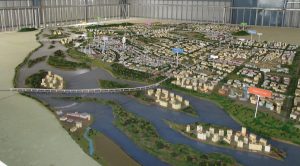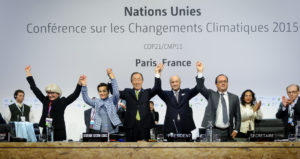Two days after an avalanche buried an Indian Army outpost in the world’s highest battlefield, authorities gave up hope of rescuing any of ten soldiers on duty and declared them dead. An entire ice wall collapsed and fell on the prefabricated outpost building, located at a height of 5,400 metres (19,600 feet) on the upper part of the Siachen glacier.
Right on the Line of Control that effectively divides the parts of Kashmir administered by India and Pakistan, the glacier in the eastern Karakoram range is claimed by both countries. A ceasefire has been holding since November 2003, with Indian troops stationed on the upper part of the glacier and Pakistani troops the lower part.
The Indian Army and the Air Force used rescue personnel, sniffer dogs, ice moving machinery and helicopters in an effort to reach their buried colleagues, but to no avail. “Specialised teams and equipment are on job since yesterday to trace the missing army personnel. But, so far there is no news about the missing soldiers,” spokesman of the Indian Army’s northern command Colonel S.D. Goswami told thethirdpole.net late on the evening of February 4.
Goswami refused to speculate on the cause of the avalanche and said, “Such incidents have been happening in the high altitude area.”
Climate change, more avalanches
But a former researcher in the Snow and Avalanche Studies Establishment (SASE) of India’s defence ministry said the frequency of avalanches had been going up steadily since 1984, when Indian troops were first deployed on the Siachen glacier and scientists started studying the area.
Speaking on condition of anonymity because he is not authorised to speak to the media, the scientist said both minimum and maximum winter temperatures on the glacier were showing steadily upward trends. “That may sound like very good news to soldiers forced to live and patrol in temperatures that can go down to minus 40 (degrees Celsius). But these upward trends are not uniform; they fluctuate a lot. That cracks the ice and makes an avalanche more likely.”
The upward temperature curves are in consonance with global trends due to climate change. Scientists say the average global temperature has risen by 0.8 degrees Celsius in the last 100 years. Researchers say some weather stations in the Himalayas show a rise of up to 1.25 degrees Celsius in average temperature over the last hundred years, well above the global mean.
Retreat of glaciers and a higher frequency of avalanches in the Himalayas are among the impacts considered “highly likely” by the Intergovernmental Panel on Climate Change, in its latest 2014-15 report.
SASE had issued an avalanche warning in the Siachen area on February 2, a day before the ice wall fell. SASE head Ashwagosha Ganju said the warning was low-level, for a snow avalanche. “An ice avalanche is tougher to predict,” he added.
On the Siachen glacier, avalanches and the extreme cold have killed and maimed many more soldiers than active fighting has. Since April 1984, as many as 869 Indian soldiers have been killed by avalanches, exposure to extreme cold and altitude sickness, according to official records. Pakistan has also lost hundreds of soldiers for the same reason. In 2012, a massive avalanche in lower Siachen killed 130 Pakistani soldiers at one go.
Since then, there has been an ongoing debate in Pakistan on the advisability of stationing soldiers at such a high altitude. Recently in Pakistan a play based on the conflict, titled “Siachen”, received rave reviews, and spotlighted the problems of soldiers based on the glacier. There is no such debate in India yet.
“Even at the peak of fighting in the 1980s and 1990s, maximum casualties occurred because of medical reasons due to the harsh terrain and climatic conditions,” researcher Sajjad Padder wrote in his paper Siachen Stalemate in the International Journal of Peace and Development Studies.
“On an average, one Pakistani soldier is killed every fourth day, while one Indian soldier is killed every other day. The lack of oxygen at heights between 18,000 and 20,000 feet and prolonged periods of isolation are a lethal combination and take a heavy psychological toll.”
In its 2005 report The Second Freedom — South Asian Challenge 2005 to 2025, the Strategic Foresight Group wrote that conditions on the Siachen glacier may kill around 1,500 soldiers between 2006 and 2010 without a shot being fired.
Questionable positioning
Military experts and peace activists have consistently questioned the strategic and economic significance of the Siachen glacier — saying it does not justify the toll it exacts in men and finances. Stephen Cohen of Brookings Institute described it as “two bald men fighting for a comb”.
Retired Indian Army Brigadier Gurmeet Kanwal, writing in the journal of the New Delhi-based Institute of Peace and Conflict Studies, said the Siachen glacier and the mountain ranges surrounding it have very little strategic significance. “Therefore, the continued military occupation of the area by both India and Pakistan is counterproductive and is a retrograde step for pursuing a genuine rapprochement process.”
Kanwal suggested that the area be demilitarised, and “after demilitarisation has been successfully completed, the Siachen DMZ (demilitarised zone) can be declared a ‘science park’. Environmental cleaning will need to be undertaken as a high priority task so that the mess left by 25 years of military occupation can be cleared up.”
Independent observers have placed the cost of maintaining such a heavy army presence in Siachen at Rs 1,000-1,200 crore (USD 148-177 billion) a year to the Indian exchequer. Pakistan spends less but it is still a heavy drain on the country’s finances.








